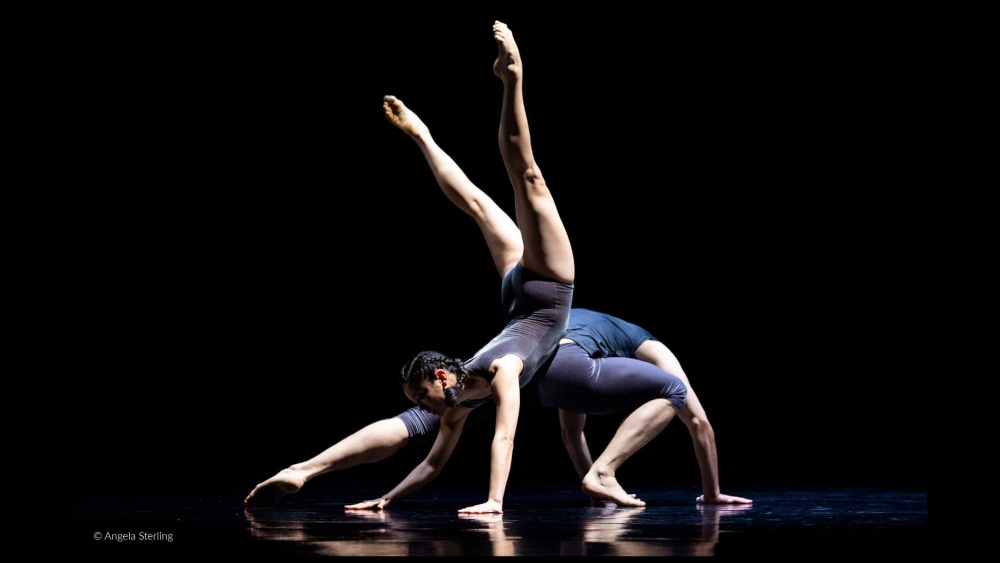
The New York Times still claims to contain “all the news that’s fit to print.” But it also delivers a constant stream of individual views on every subject under the sun to its worldwide audience, and when the object being viewed is a work of art created in a provincial puddle like Seattle, the opinion effectively becomes, for better or worse, the Truth.
Last Friday, Godzilla, in the form of the Times’ dance critic Brian Seibert, turned its attention to Pacific Northwest Ballet’s fourth on-line-only repertory program, and its verdict was decidedly mixed. A 2017 filmed performance of Alexei Ratmansky’s Pictures at an Exhibition met with Seibert’s approval, but the two new works on the program were found wanting. He grants both incidental virtues but damningly sums up: “Both choreographers seem to want to provide comfort food but struggle to make the choreography its own defense.”
Well, I too had problems with Donald Byrd’s and the skies are not cloudy all day. Cowboy ballets have been around for more than 80 years, since Eugene Loring’s Billy the Kid stepped on stage, shirtless and in star-spangled chaps. (Even George Balanchine had a campy crack at one in Western Symphony.) Oklahoma, Seven Brides for Seven Brothers . . . Is there any life left in the iconic cowpoke silhouette?
Byrd doesn’t find much, but he doesn’t seem to be interested in doing so. The music he’s chosen, John Adams’s Book of Alleged Dances written for the Kronos String Quartet isn’t particularly Western-flavored or even dancy. The corps of four boys seemed to have been chosen for their callow uncertain androgynous look, and the two solo numbers that close the piece are sort of anti- images. Dylan Wald presents a kind of cool classic-marble Apollo version of the icon, while Kyle Davis’s brilliantly squirmy-lascivious call-boy recalls soft-corn gay-porn photos from the 1950s.
It doesn’t “add up” but it clearly wasn’t meant to: like other Byrd works, it’s kind of a sketch-pad with images ranging from near-outline to quasi-finished. What it means remains in suspension and provisional. And remarkably clear in memory.
Seibert’s dismissal of Alejandro Corrudo’s brooding paired-duet Future Memory as “comfort food” is particularly unjust. I have not myself been a fan of the choreographic trend toward endless undulant movement in half-light to undulant New-Agey music, but Corrudo’s piece goes way beyond that cliché. It displays the polar opposite of traditional partnering: a fusion of male and female into a single expressive whole, simultaneously extravagantly virtuosic and asexually erotic.
A second and even a third viewing broughtout a deeper expressing dimension: movements mirrored and reversed and exchanged. This is “abstract” choreography of a very high, disciplined order. I can’t wait to see it again, live. The prospect of more Cerrudo work joining the PNB repertory is the brightest light imaginable at the end of the tunnel we inhabit just now.
Discover more from Post Alley
Subscribe to get the latest posts sent to your email.

Thanks. I agree about the Donald Byrd. I’ve seen several of his dances and thought it was an odd choice. I liked the set and staging but the choreography seemed very strange. I also thought the review was dead wrong about the Cerrudo piece. I was mesmerized by the dancers’ movements. It may have been exhibitionistic in some way but truly engrossing.
I think part of what Siebert was responding to in his review was the difference between work that was made primarily for the camera’s eye, and work that came directly from a proscenium world. The Ratmansky was made for New York City Ballet in their theater home. Pacific Northwest Ballet was filmed at a dress rehearsal in McCaw Hall when the work was first staged — the version we saw online was very clearly set in that location, and our relationship to the cast always includes the separation which is baked into that environment. Byrd and Cerrudo both knew their dances would be seen on film, and took advantage of those elements to underline certain aspects of their work. Cerrudo’s double duet brought us extra-close to the performers, showing details we would rarely be able to see from a seat in the theater (even one in the orchestra). What we may have lost in the way our peripheral vision can anchor us to a location while we focus on a singular phrase, we gain in the extra kinesthetic jolt that an intimate view provides. Cerrudo seems to value an ongoing sense of fluidity, even in tense or dramatic moments — the close-up camera gives us a powerful experience of that quality.
While Byrd has focused on social justice issues in his most recent works, his 2019 “title” for PNB had a strong romantic and emotional core — the message was as much about human relationships as it was about cultural divisions. “the skies were not cloudy all day” does have a nostalgic sweetness we don’t often see from him, but the references to iconic musical theater works and images of Western manhood remind us of another time when we needed to move forward as a culture, leaving some charming stereotypes behind.
Chalk it up to bad proofreading — Donald Byrd’s 2019 work for Pacific Northwest Ballet was called “Love and Loss,” not “title (to be inserted later)”